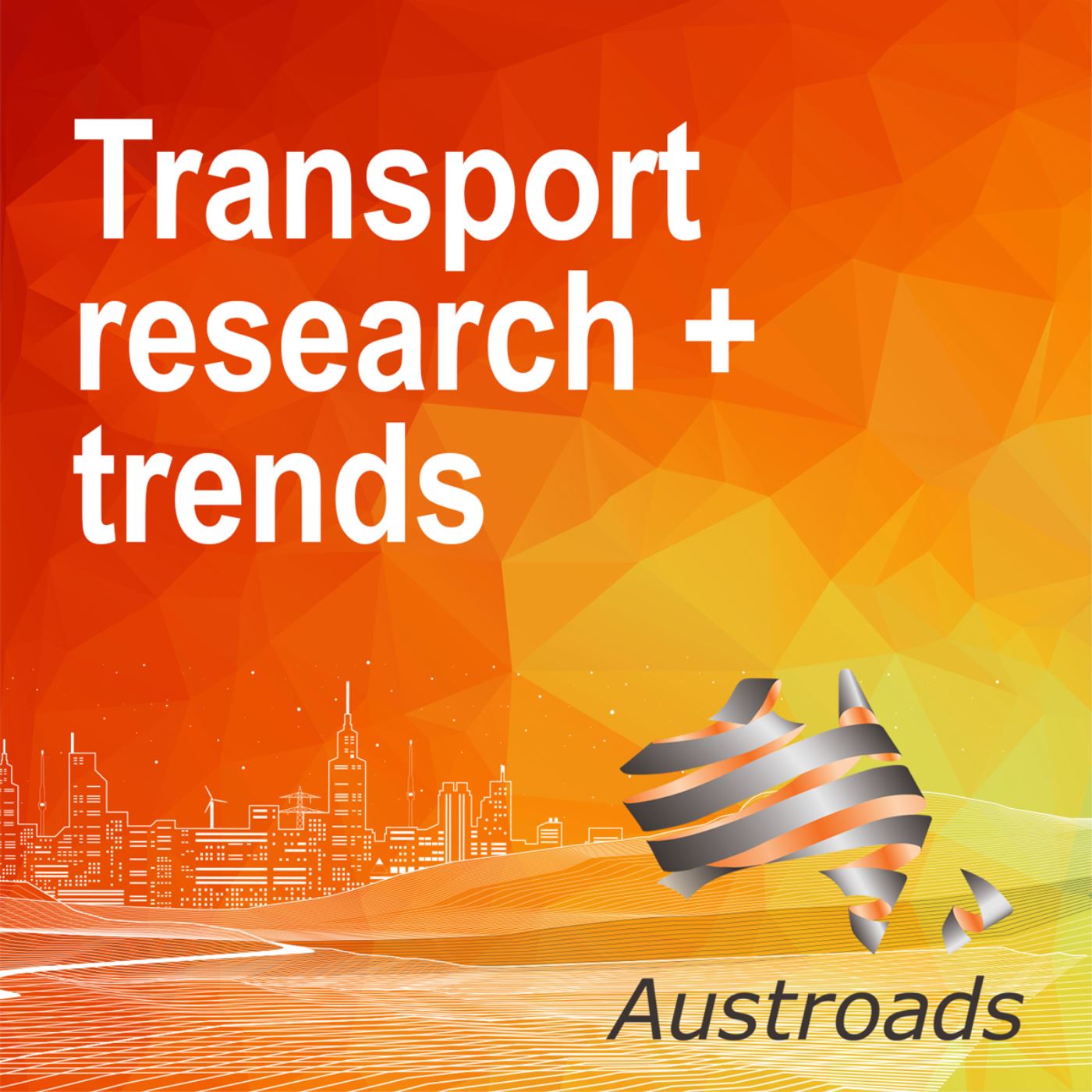Episodes
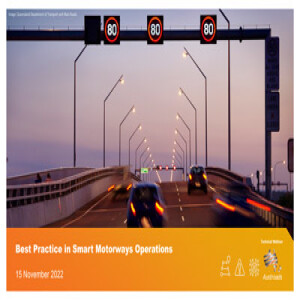
Tuesday Nov 15, 2022
Best Practice in Smart Motorways Operations
Tuesday Nov 15, 2022
Tuesday Nov 15, 2022
The operation of smart motorways is a subset of broader transport operations and relies on complex organisational arrangements with highly specialised capabilities to manage a growing number of assets, follow a wide range of operational scenarios, coordinate with multiple stakeholders, and continuously adapt to new technologies and systems. This increasing complexity places pressure on traffic management centre (TMC) managers and their operational staff who are responsible for delivering motorway safety and efficiency objectives.
As such transport agencies continually seek to improve the way smart motorways operational capabilities are managed, developed and adapted to minimise disruption for customers through best practice operational planning, project integration, live network monitoring, traveller communications and traffic management.
In response Austroads has prepared a research report looking into emerging and new trends to inform potential future directions for TMCs across Australia and New Zealand. Guidelines have also been developed for road-focused agencies to help classify their operating characteristics, define a national capability framework for the operational environment, and showcase good practice integration of new projects and enhanced smart motorways schemes.
This webinar, presented by David Yee, Simon Gough and Joanne Deng, provides an overview of the future trends, research findings and agency guidance. The research into future trends helped to identify different motorway operational methods and practices as well as operational principles that underpin an agency’s smart motorway capabilities. These smart motorway capabilities include TMC business management, live motorway operations, motorway operational planning and optimisation, motorway projects integration as well as use of intelligence tools and devices to inform decision making.
The webinar also offers advice on how to support improving smart motorway capabilities using a Smart Motorway Classification Model and Capability Framework. The capabilities are the foundational abilities that should be developed. The Capability Maturity Model is a maturity scale for smart motorway capabilities that can be used by agencies to set future targets and to measure against. The guidance advises how to use the Capability Maturity Model to plan and improve smart motorway capabilities and projects integration work.
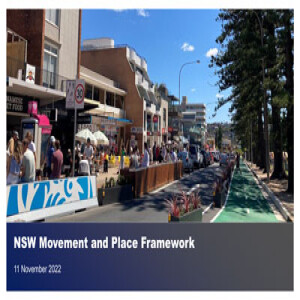
Friday Nov 11, 2022
NSW Movement and Place Framework
Friday Nov 11, 2022
Friday Nov 11, 2022
Movement and Place is a multi-disciplinary, place-based approach to the planning, design, delivery and operation of transport networks. It broadens our thinking about our roads and streets beyond their functional role in supporting movement - they are also places for people to live, work and spend time.
It is part of an international shift towards embracing the importance of people, and place when designing, planning or operating streets and roads. It recognises the complementary relationships between place and movement and matching the road or street to its desired function within the wider network.
This webinar, presented by Arjan Rensen, Ben Cebuliak and Gareth Collins, provides an overview of the whole-of-government NSW Movement and Place Framework and how it supports Austroads Guidance, Australian Standards and the Global Street Design Guidelines as they apply in different contexts across NSW. The Framework invites practitioners to take collaborative, spatial and vision-led approaches and offers a common language and process of collaboration to support meaningful discussions across all levels of government, industry, and communities.
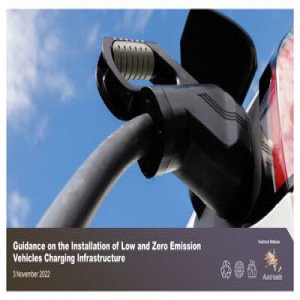
Thursday Nov 03, 2022
Thursday Nov 03, 2022
Internal combustion engine vehicles are a major source of greenhouse gas emissions in Australia and New Zealand. Encouraging the public to utilise low and zero emission vehicles (LZEVs), such as battery electric vehicles will contribute to creating a more sustainable road transport system.
As the number of LZEVs is expected to rise, there will be a growing demand for charging infrastructure. Increasing availability of such infrastructure will also encourage the uptake of LZEVs; however, currently there is little guidance available to road agencies to assist them in managing the installation of charging infrastructure within road reserves.
This webinar with David Silvester and Norman Cheung presents new Austroads guidance to help agencies manage the planning, installation, and operation of charging infrastructure for non-commercial passenger vehicles with battery-electric or hybrid propulsion within the road reserve or road related areas.
The guidelines draw on the latest international and national experience and case studies and can be used by agencies in the implementation of consistent charging facility practices to reduce costs, improve the road environment, road safety, network operations, and LZEV driver experience.
The webinar covers guidance on managing the life cycle of the facilities, including planning, design, operations, interoperability, maintenance, and decommissioning.
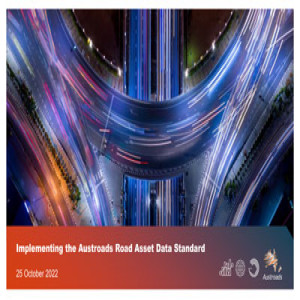
Tuesday Oct 25, 2022
Implementing the Austroads Road Asset Data Standard
Tuesday Oct 25, 2022
Tuesday Oct 25, 2022
To enable collaboration and the adoption of best-practice approaches across jurisdictions, Austroads is undertaking a multi-stage project to standardise and automate ways of recording and sharing road asset information.
The benefits of standardised collection of road asset data and the availability of a platform to store or exchange data include:
- direct savings to road agencies through reduced information management costs, including the opportunity to sustain an open and competitive market of data collectors
- reducing the time needed to train new staff and contractors
- facilitating better decision making on road investment and expenditure through consistent asset data
- facilitating the implementation of national reforms, including Heavy Vehicle Road Reform and automated vehicle reform
- providing consistent asset data to accommodate innovative technology in the road sector (e.g., LIDAR technology, building information modelling (BIM), and digital twinning).
This webinar, presented by Chris Koniditsiotis, Angus Draheim, Tom Magarey, David Deacon and Geoffrey Paton, presents an overview of the implementation of the Austroads Road Asset Data Standard and demonstrates a knowledge sharing platform that is being developed for road managers to use to report activities, collaborate and share insights.
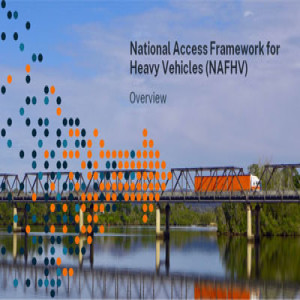
Wednesday Oct 19, 2022
National Access Framework for Heavy Vehicles
Wednesday Oct 19, 2022
Wednesday Oct 19, 2022
The proposed National Access Framework for Heavy Vehicles is a principles-based strategic policy document which highlights the role of state and local government road managers in managing heavy vehicles access on the road network. It is also proposed to establish a national Access Working Group to deliver a targeted national Access Work Program based on the Framework's principles.
In this session, presenters – Pascal Felix, Stuart Maxwell and Sanjiv Sathiah, talk about the elements of the framework and how they will potentially benefit state and local road managers and industry.
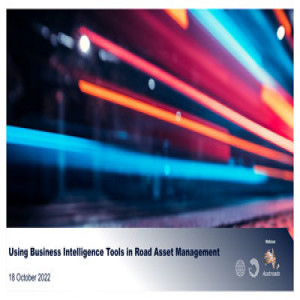
Tuesday Oct 18, 2022
Using Business Intelligence Tools in Road Asset Management
Tuesday Oct 18, 2022
Tuesday Oct 18, 2022
Road agencies are increasingly utilising various business intelligence tools to collect, process and analyse large amounts of asset management data from internal and external systems. Harnessed information is used to maintain road assets and improve the efficiency of their performance.
In this webinar data practitioners from the Tasmanian Department of State Growth, Queensland Department of Transport and Main Roads and Main Roads Western Australia talk about their experience in using digital data analytics tools for improving the accessibility and visualisation of data in road asset management.
Norah Weatherby’s presentation focuses on the Queensland Department of Transport and Main Roads’ asset information systems and analytics platforms that are critical to supporting Queensland’s road network.
David Deacon shares how the Tasmanian Department of State Growth’ Roads Asset Management Branch works with data to enable effective decision-making, break down silos and connect people.
Shaan Ciantar, from Main Roads Western Australia, talks about Power BI’s Pavelytics, an interactive app that displays relevant data to asset and maintenance managers on selected road sections. Shaan’s presentation goes through the need for such an app, how it was scoped for maximum usability, the data-design process, and finally a demonstration of the app in use.
Nicholas Archer presents a novel approach to mapping road data for Main Roads Western Australia using a custom Power BI visual and web service.
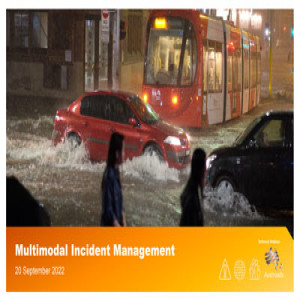
Tuesday Sep 20, 2022
Multimodal Incident Management
Tuesday Sep 20, 2022
Tuesday Sep 20, 2022
Road agencies increasingly recognise the value of coordination and cooperation with public transport operators in responding to road and transport incidents, as it helps support a more holistic and integrated multimodal approach to minimising traveller disruption.
Austroads has developed guidance for road-focused agencies to improve their capabilities in the management and resolution of an unplanned incident that negatively impacts, or has the potential to impact, the normal operation of more than one transport mode.
This webinar, presented by David Yee and Andrew Somers, provides an overview of the multimodal incident management (MMIM) research findings and agency guidance. The guidance examines worldwide MMIM methods and practices, and identifies key themes and principles for agencies to consider in planning and developing their MMIM capabilities. These themes include vision and strategy for MMIM, coordination and cooperation, integrated operations centres, leverage existing practices, integrated traveller information, traveller demand management and network load balancing, alternative transport services, multimodal data exchange, MMIM tools, and intelligence and decision making.
The webinar also offers advice on how to improve MMIM capabilities using a MMIM Capability Framework that consists of three components:
- a set of MMIM capabilities
- a MMIM Capability Maturity Model
- guidance
The capabilities are the foundational abilities that should be developed. The Capability Maturity Model is a maturity scale for MMIM capabilities that can be used by agencies to set future targets and to measure against. The guidance advises how to use the Capability Maturity Model to plan and improve MMIM capabilities.
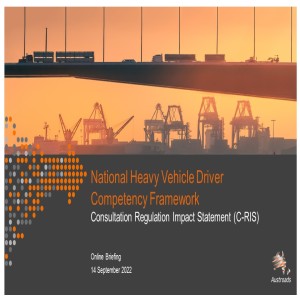
Wednesday Sep 14, 2022
NHVDCF Consultation RIS Online Briefing
Wednesday Sep 14, 2022
Wednesday Sep 14, 2022
Austroads is encouraging drivers, employers and trainers to have their say on proposed changes to heavy vehicle driver licensing in Australia.
The changes are documented in a Consultation Regulation Impact Statement (C-RIS) which seeks feedback on proposed changes to the National Heavy Vehicle Driver Competency Framework. The Framework was endorsed by ministers in 2011 but has only been implemented in four states and territories.
At the request of transport ministers, Austroads has been undertaking an extensive program of work to review and improve the NHVDCF.
Austroads’ review aims to deliver a harmonised Australian licence training and assessment framework that produces safe and competent heavy vehicle drivers and reflects the current and future needs of heavy vehicle operators and the future freight task.
Visit austroads.info/c-ris to download the C-RIS, access fact sheets and videos summarising the proposals and provide feedback.
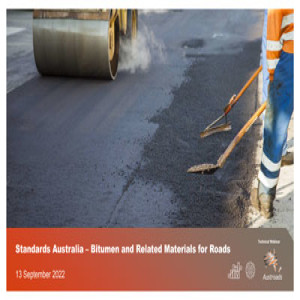
Tuesday Sep 13, 2022
Standards Australia – Bitumen and Related Materials for Roads
Tuesday Sep 13, 2022
Tuesday Sep 13, 2022
In Australia and New Zealand, bituminous binders used in road construction are tested prior to use to ensure they will perform satisfactorily during road construction/maintenance. Some of the Australian Standards that are used for these tests have not been updated for 25 years which can make it difficult for testing laboratories to adhere to them.
In this webinar Dr Robert Urquhart presents an overview of an Austroads project which provided expert technical input into the revision of seven Australian Standards – four bituminous emulsion, one polymer modified binder and two cutback bitumen related Australian Standard test methods. They were revised by the Australian Standards Committee CH-025 ‘Bitumen and related products for roadmaking’ between August 2020 and September 2022.
Following topics are covered in the session:
- the process used to update an Australian Standard
- the main changes to each of the seven Standards
- the status of revision of each Standard

Thursday Aug 25, 2022
Sustainable Road Tunnels
Thursday Aug 25, 2022
Thursday Aug 25, 2022
Road tunnels are an important element of the transport infrastructure, requiring significant resources and energy to construct, operate and maintain. Consequently, they are potentially a major source of greenhouse gas emissions and environmental pollution.
Practices and methods that promote the sustainability of road tunnels are, therefore, necessary for alleviating the pressure they exert on scarce resources and the natural environment. However, sustainability is not about what should be done for the environment, it is something that must be done to preserve the quality of all life on the planet. It is particularly important for a road tunnel compared to a road at grade as a road tunnel has a substantially higher carbon footprint, both during its construction and the continuous operation of its systems throughout its operating life.
Every state and territory in Australia, as well as New Zealand, has committed to net zero emissions by 2050. In this context, responsible organisations have an obligation to reduce the sustainability impacts of delivering and operating road tunnels whose asset life is expected to extend beyond 2050.
In this webinar, Georgia O’Connor, Les Louis and Tony Peglas give an overview of the research undertaken to include updates for sustainability in the four parts of the Austroads Guide to Road Tunnels (AGRT).
The research presented in the session will provide owners, operators, designers and those constructing tunnels with guidance on how to achieve more sustainable outcomes at each stage of a road tunnel’s life cycle.

